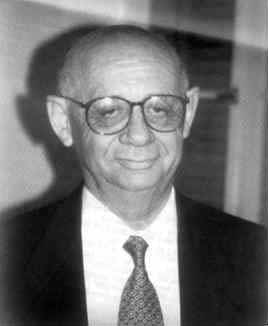


 تاريخ الرياضيات
تاريخ الرياضيات
 الرياضيات في الحضارات المختلفة
الرياضيات في الحضارات المختلفة 
 الرياضيات المتقطعة
الرياضيات المتقطعة
 الجبر
الجبر
 الهندسة
الهندسة 
 المعادلات التفاضلية و التكاملية
المعادلات التفاضلية و التكاملية 
 التحليل
التحليل
 علماء الرياضيات
علماء الرياضيات |
Read More
Date: 24-2-2018
Date: 24-2-2018
Date: 25-2-2018
|
Born: 23 August 1928 in Tarutino, Ukraine
Died: 12 October 2009

Israel Gohberg came from a Jewish family. He attended school in the newly created Republic of Kirgiz. In 1926 the status of the autonomous Kirgiz oblast had been changed into that of an autonomous republic, and in 1936 a full union republic had been created, the Kirgiz Soviet Socialist Republic.
Gohberg then entered the College of Education in Frunze. Frunze was named Bishkek up to 1926 when it became the capital of the Kirgiz Autonomous Soviet Socialist Republic and was named after the revolutionary leader Mikhail Frunze. Today it has been renamed Bishkek. Gohberg's teachers at the College of Education were so impressed with his abilities that persuaded him to move to a university. Thus, after two years at the College in Frunze, he went to the University of Kishinyov, in Kishinyov the capital of Moldova, which had opened in 1945. Today Kishinyov had reverted to its original name of Chisinau.
After graduating from University of Kishinyov, Gohberg went to the University of Leningrad to study for his doctorate which he received in 1954. Then he moved to Moscow University where he received his habilitation.
He taught at the Teachers' College in Soroki and later at the teacher-training institute in Balti in northern Moldova. Gohberg was appointed to the Academy of Sciences in Kishinyov where, in 1964, he became the Head of Functional Analysis. He also held a chair of mathematics at the University of Kishinyov.
In [2] Gohberg describes some of the difficulties encountered by Jews in the Soviet academic world, particularly those he suffered from 1968. In [2] he points out that there were no Jews in the Mathematics section of the USSR Academy of Sciences between 1968 and 1984. By 1969 Gohberg had made the decision to try to emigrate to Israel but only after great difficulty, and a long wait, did Gohberg and his family obtain the visa necessary for them to leave. After obtaining the visa in 1974, he emigrated to Israel. Once in Israel, he was appointed to a professorship at Tel Aviv University and he also was appointed to the Weizman Institute in Rehovot.
In 1983 he was appointed to the Free University (Vrije Universiteit) of Amsterdam. He has been a visiting professor at many universities such as the University of Calgary in Canada, and College Park Maryland in the United States.
In addition to Gohberg's outstanding work in analysis and in particular in operator theory and matrix methods, he founded the major international journal Integral equations and operator theory in the late 1980s. The journal:-
... is devoted to the publication of current research in integral equations, operator theory and related topics with emphasis on the linear aspects of the theory.
Gohberg has an amazing publication record with over 460 papers listed in Mathematical Reviews. Notice that this is around 100 more than the list given in [4] which is consistent with his almost unequalled record of averaging 10 papers per year. He has supervised 40 doctoral students and exercised an amazing influence on his area.
Israel Gohberg had been described as one of the exceptional mathematicians of our time, comparable in his manner perhaps only to Paul Erdős. Three qualities would appear to account for his unique influence: he is a charismatic and inspirational man who quickly pulls others into his orbit, keeping acolytes motivated for long periods of time; he possesses an uncanny instinct for what is mathematically possible and productive; and he has the talent and stamina to see that his ideas and those of his co-authors are realised, and then communicated through publications to the larger interested audience.
Gohberg has received many awards for his outstanding work including the Alexander von Humboldt Prize in 1992 and an honorary degree from the Institute of Technology in Darmstadt in June 1997. His awards prior to 1988 are listed in [3].
Articles:



|
|
|
|
مخاطر خفية لمكون شائع في مشروبات الطاقة والمكملات الغذائية
|
|
|
|
|
|
|
"آبل" تشغّل نظامها الجديد للذكاء الاصطناعي على أجهزتها
|
|
|
|
|
|
|
تستخدم لأول مرة... مستشفى الإمام زين العابدين (ع) التابع للعتبة الحسينية يعتمد تقنيات حديثة في تثبيت الكسور المعقدة
|
|
|